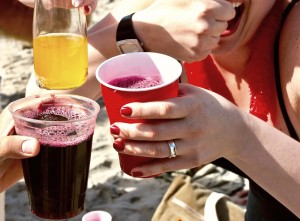Lowering the minimum drinking age from 21 to 18 could increase the high school dropout rate, a new study suggests. The presence of legal-aged peers in a high school setting increases access to alcohol for younger students, researchers report in the Journal of Studies on Alcohol and Drugs.
The researchers examined dropout rates in the years before the minimum drinking age was raised to 21 by the National Minimum Drinking Age Act of 1984. They found 17-year-olds were affected by their 18-year-old peers, Time reports.
“We saw a 3 percent increase in dropout rates in the whole sample,” lead author Andrew Plunk said. “In already at-risk groups [of dropping out of high school] like blacks and Hispanics, we saw a 4 percent increase.” In young people whose parents had drinking problems, the dropout rate increased by 40 percent.
With 3.3 million students expected to graduate from high school this year, a 3 percent increase in the dropout rate would translate into 99,000 additional dropouts, the article notes.
“The minimum legal drinking age changes how easy it is for a young person to get alcohol,” Plunk said in a news release. “In places where it was lowered to 18, it’s likely that more high school students were able to get alcohol from their friends.” For certain vulnerable students, access to alcohol might reduce their chance of graduating from high school, he said.
There have been calls for lowering the drinking age again, as a way to reduce binge drinking on college campuses. Advocates for reducing the drinking age say college students who can legally purchase alcohol will drink more responsibly.
Plunk says this argument misses the effect lowering the drinking age would have on high school students. “I think this study gives us some idea of what could happen if we lower the legal drinking age,” he said. “It suggests to me that we’d see this same dropout phenomenon again.”
